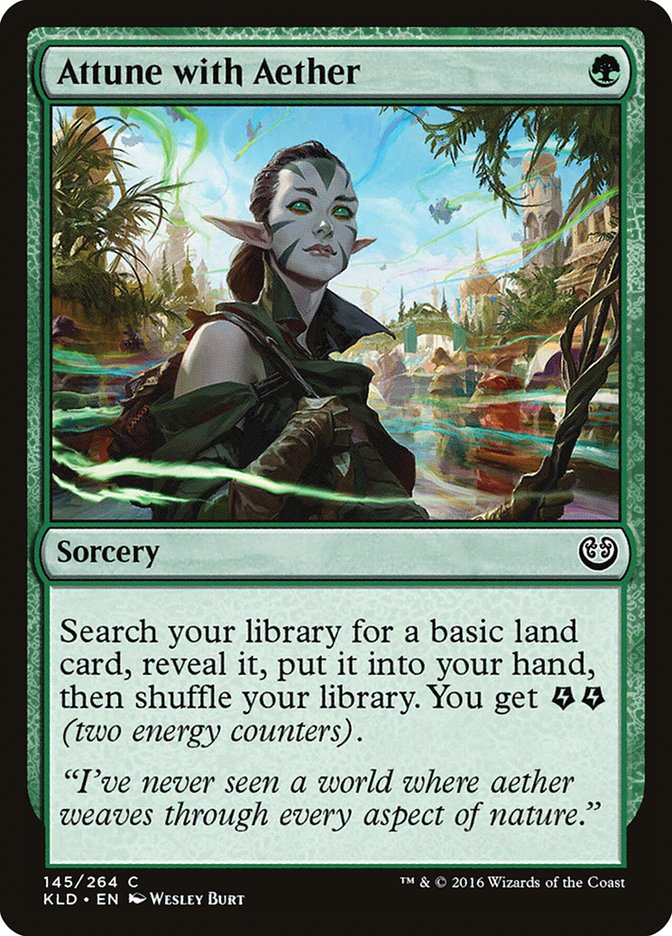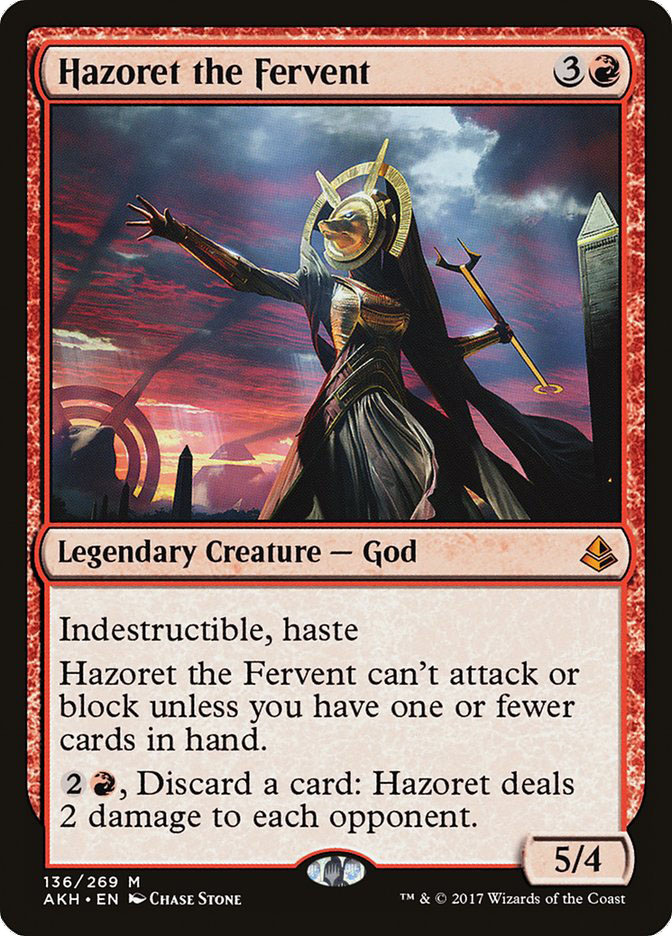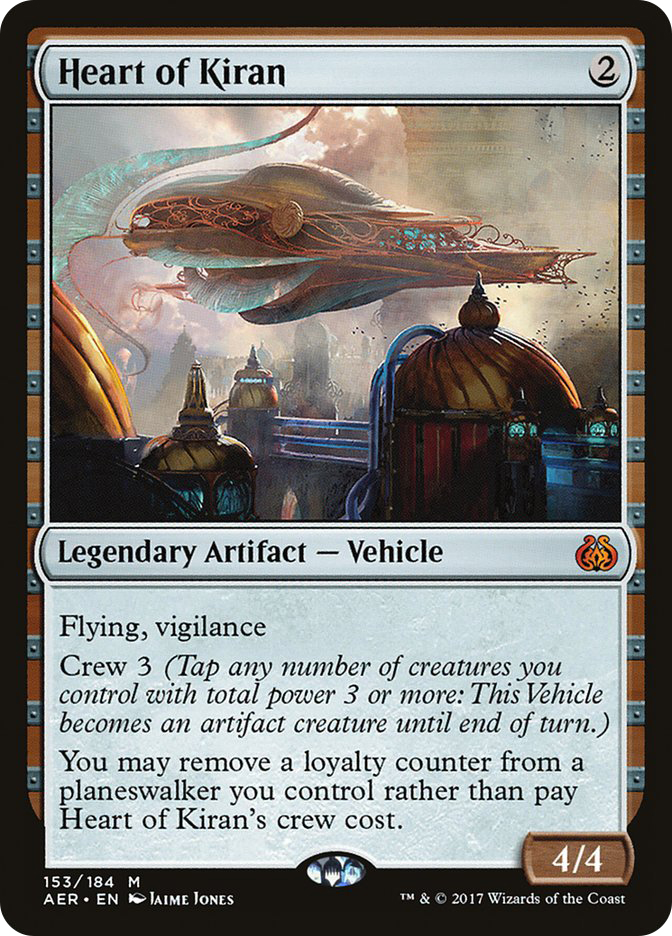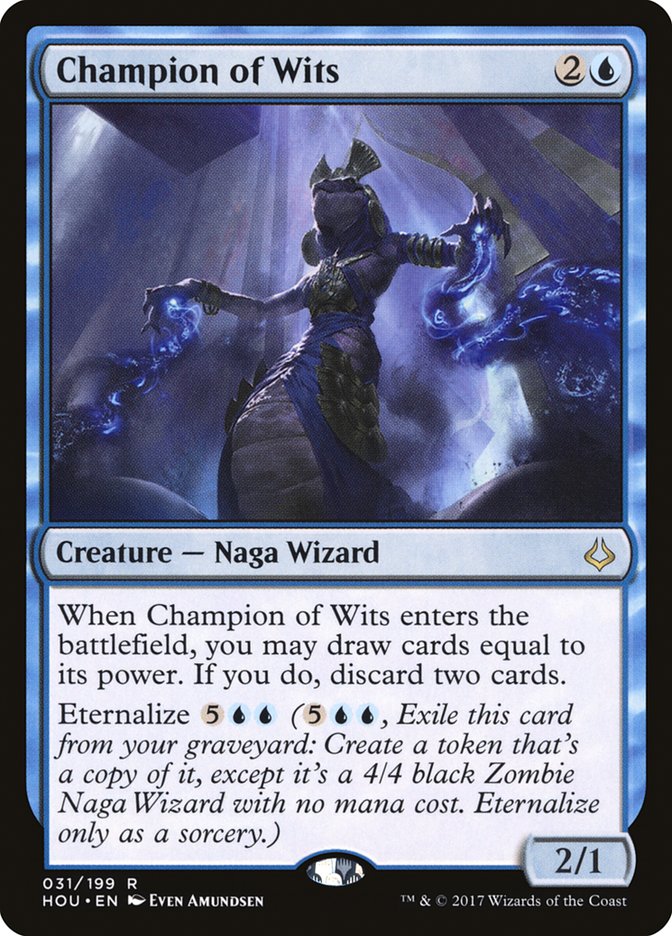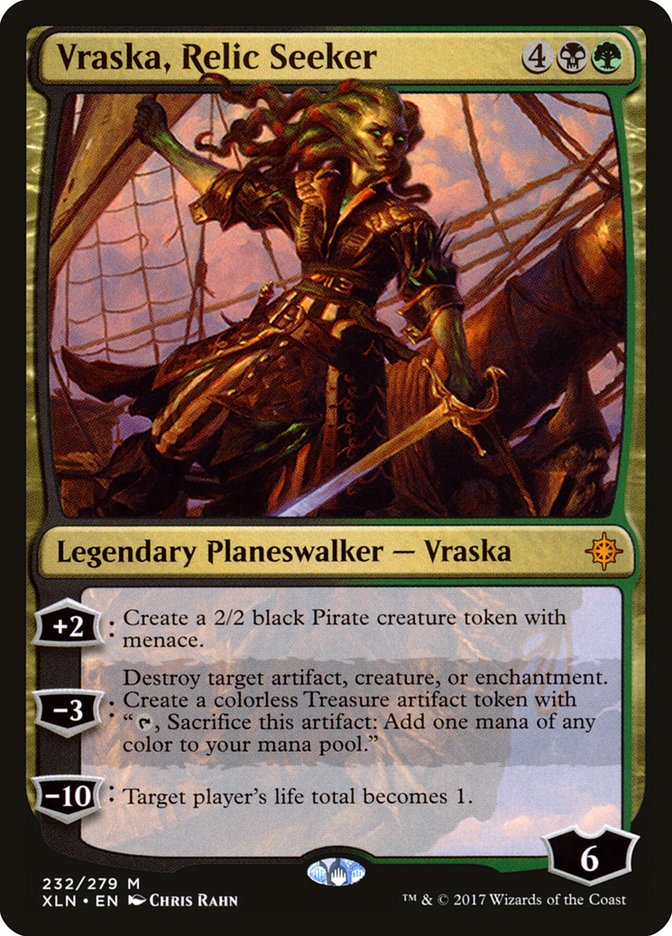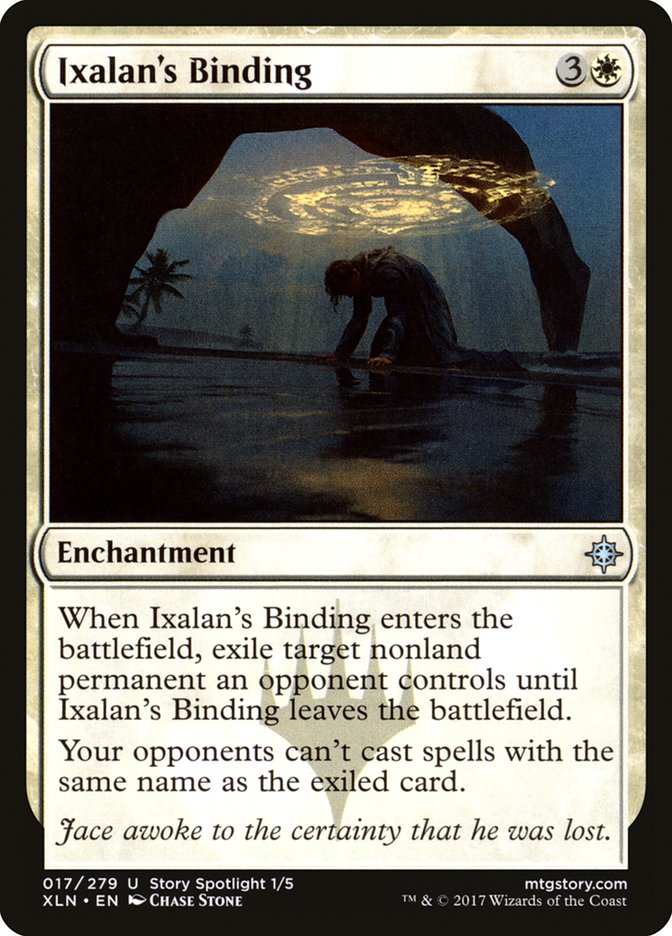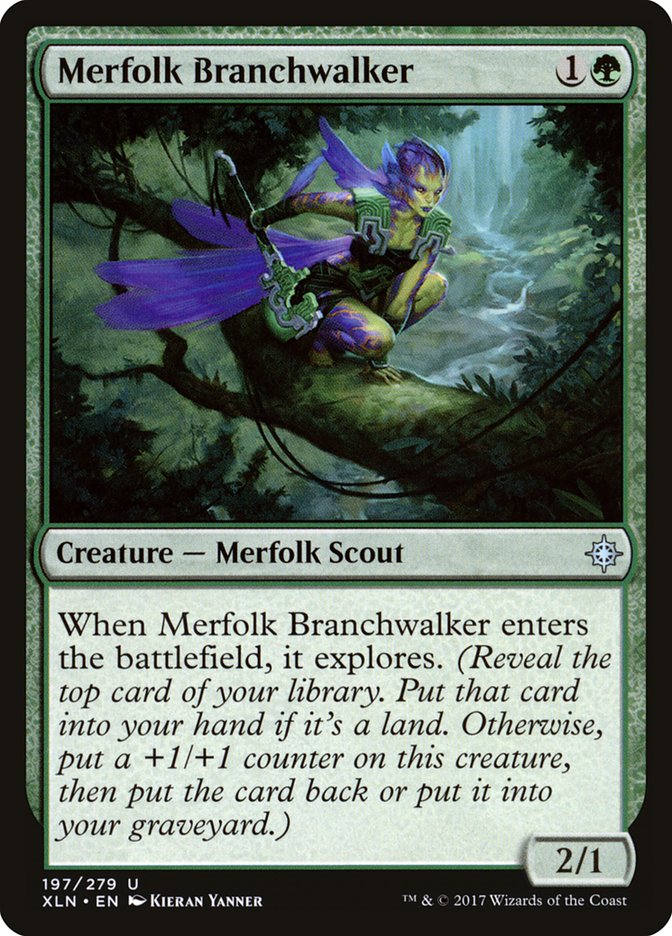Last week I found myself in the perennial struggle of deciding whether or not to go to Grand Prix Toronto. On one hand I was burnt out from traveling, given my extended stay in Europe leading up to Pro Tour Rivals of Ixalan, but on the other hand, if I skipped this tournament, I would fall off the Pro Tour. Sure, I may currently have 32 Pro Points, which “locks” Gold, but due to the rotating system being implemented next season, I’d assuredly fall off the Pro Tour if I don’t go to Grand Prix Toronto. In the end, I decided no longer competing at the highest level was worth the weekend home, and I spent my time playing Standard for the first time since my beloved Attune with Aether was prematurely taken from me.
At first I was having none of it. No longer did I know what cards I should be playing with. It was so easy to know without doubt you were doing the right thing when cards like Rogue Refiner existed. The mana no longer “fixed” itself, and lands entered the battlefield tapped way more than I was used to. My creatures didn’t have hexproof to stop Ahn-Crop Crasher, nor did my Whirler Virtuosos block Hazoret the Fervent until the end of time. It became abundantly clear to me that this format was an entirely new monster, even though I was familiar with almost every card. It’s as if I finally achieved my childhood dream of jumping into the portal with Quinn Mallory and ventured into the unknown, never able to return to the home I thought I wouldn’t miss.
I do, though. I miss it so very much.
I can’t go backwards, though. This is the format in front of me, and it’s time to figure out how to break it. As Quinn Mallory, inventor of interdimensional travel, always said, “We have a plan. We just don’t know what it is yet.”
The first step I take when being introduced to a new format is to identify how it functions. There are only so many ways games of Magic can play out, so it’s important to pick up on trends I’ve previously experienced throughout my years of play. Rivals of Ixalan Standard seems to exist in a very specific set of parameters, thanks to the Gods from Amonkhet block.
These cards clearly define this format; they are both unbelievably resilient to removal, but worse, they will dominate games found in parity. This forces our hand to design decks similar to how we did when Bant Company and G/W Tokens ruled Standard two years ago. It’s important to continuously answer problematic permanents but also generate enough card advantage to keep the engines revving for when the next issue is presented. You just can’t run out of steam in this format with the non-aggressive decks or you’ll fall way too far behind and swiftly.
“If you can’t beat them, join them” has never rung truer, as it’s almost impossible to play an aggressive deck that isn’t red without Hazoret the Fervent or a midrange deck that doesn’t play The Scarab God. It’s just foolish to play these types of strategies without access to one of these cards. This is one of the reasons why we’ve seen Mardu Vehicles effectively fall by the wayside as the weeks have gone on. Why play a three-color deck when the one playing a single color still has access to the most powerful card in both decks?
This brings up a very good rule to live by when it comes to deck selection. When a new format rolls around, everyone’s trying to do everything. Usually there’s a reason behind all the brews, but sometimes players just do different things for the sake of being different. Wishing to fall into this trap as little as possible, I’ve adopted a philosophy on deck selection:
Do as few unique things as possible if you can replicate the same results as decks with more variables.
What this means is if the deck with one color gets the same results as the deck with three colors, it’s inherently better. Keep in mind metagame evaluations are a part of this, as no deck lives in a vacuum.
One-color decks are more consistent but often don’t have access to enough options to win games of Magic. That’s why we add the second or third color. Most of the time it’s correct to do so, which is why we see it play out that way, but then there are outliers like Mardu Vehicles and Mono-Red Aggro. Since both decks’ best card is Hazoret the Fervent, and neither white nor black offers too much of an upgrade to the Mono-Red deck, it’s thus best to just play the one-color strategy. That could change down the road if, say, Fatal Push isn’t as highly played, making Heart of Kiran a stronger choice, but for now that’s not the case.
Moving back to the initial statement, the format’s run by these two Gods. If Peach Garden Oath runs these streets, these two Gods run the Bifrost, or whatever the Multiverse calls its highways. This has caused players to gravitate towards exile-based removal. Cards like Vraska’s Contempt, Cast Out, and Ixalan’s Binding are on the rise as the format’s premium removal spells. Even Settle the Wreckage is seeing more play than Fumigate, as it’s a clean answer to aggressive decks playing Hazoret the Fervent. It also helps that Cast Out has flash, disguising Settle the Wreckage’s clear downsides.
Opposing strategies are also far removed from the specific design space that occupies strategies that play either The Scarab God or Hazoret the Fervent. It’s one of the reasons why the format has so few aggressive-to-midrange decks not supporting these cards, but also why strategies like B/W Tokens, U/W Approach, and God-Pharaoh’s Gift-based decks are being played. It takes so many resources to be good against decks that play these two Gods that it makes it easier for differing strategies altogether to become well-positioned.
Creatures (25)
- 1 Pia Nalaar
- 4 Bomat Courier
- 3 Kari Zev, Skyship Raider
- 4 Hazoret the Fervent
- 4 Ahn-Crop Crasher
- 4 Soul-Scar Mage
- 4 Earthshaker Khenra
- 1 Fanatical Firebrand
Planeswalkers (2)
Lands (5)
Spells (28)
- 18 Mountain
- 4 Shock
- 4 Lightning Strike
- 2 Abrade

It’s a safe bet that the best Hazoret the Fervent deck is Mono-Red Aggro, and it’s most likely the best deck in general, as it’s been putting up impressive numbers online. To effectively beat the deck, one needs removal, pressure, and an answer to Hazoret the Fervent in almost every game. Missing just one of these conditions can cause a game to snowball out of control in a hurry. Blocking isn’t even always effective, since Earthshaker Khenra and Ahn-Crop Crasher punish those trying to get in front of the deck’s creatures.
What’s still up in the air is what the best The Scarab God deck is. The card’s being splashed in G/B Constrictor, is the centerpiece of Grixis Energy, and the finisher for U/B Control decks. If I had to take a guess as to what the best home for the card is, it would be in this deck.
Creatures (21)
- 1 Gonti, Lord of Luxury
- 4 Glint-Sleeve Siphoner
- 4 Gifted Aetherborn
- 3 The Scarab God
- 4 Champion of Wits
- 1 Hostage Taker
- 2 Kitesail Freebooter
- 2 Ravenous Chupacabra
Planeswalkers (3)
Lands (23)
Spells (13)

I believe B/U Midrange was originally designed by Logan Nettles, aka Jaberwocki on Magic Online, during the reign of Temur Energy. He developed the midrange deck for some time before porting it over to “new” Standard, similar to Grixis Energy. Both decks play out similarly, but I believe this deck to be significantly more consistent, not just in the mana but in how effective the cards being cast are. Harnessed Lightning and Whirler Virtuoso are both past their prime. Still fine cards, no doubt, but nowhere near as good as they once were alongside Rogue Refiner and Attune with Aether.
Champion of Wits has been phenomenal for me in my early testing. As I said earlier, it’s important to play a high density of removal to compete with Mono-Red Aggro as well as efficient removal to deal with both Hazoret the Fervent and The Scarab God. At the same time, decks that don’t play these Gods have very few creatures you want to interact with in the early turns. So not only does Champion of Wits help you make sure you have stable land drops, it also gets rid of useless removal in matchups where it’s not needed. You also can’t run out of steam in this format or you run the risk of getting drowned out by your opponent’s card advantage. Champion of Wits helps out here as well, as you can eternalize it late in the game to fuel back up.
The big innovation for this deck came from Ryuji on Magic Online during this weekend’s MOCS Playoff. Ryuji splashed Vraska, Relic Seeker in the deck, as it’s a powerful top-end planeswalker but also a silver bullet against W/B Tokens, a deck that has been picking up in popularity. He intelligently identified that the reason for this influx of tokens was mainly due to the absence of cards like Vraska, Relic Seeker. W/B Tokens is forced to play so many cards maindeck to make the Mono-Red Aggro matchup stronger that the deck is currently extremely weak to Vraska. I even witnessed it with my own eyes, as I watched Simon Nielsen playing W/B Tokens get knocked out of the event by Ryuji in the middle of the Swiss. Right then and there I knew Ryuji was onto something.
I’m looking forward to continuing to work on this deck, but I’m extremely interested in Tokens as well.
Creatures (11)
Planeswalkers (2)
Lands (17)
Spells (30)

W/B Tokens is only a deck thanks to the necessity for most decks to play such a high density of removal spells. This makes Game 1 fairly easy for the deck when an opponent doesn’t have an aggressive curve thanks to drawing too many “blanks.” The deck can struggle to get its engines going in the early turns, but will run away with a game if it ever stabilizes. That’s the main reason why the maindeck has so many copies of both Sunscourge Champion and Regal Caracal. Another card this deck can access is Ixalan’s Binding, which is absolutely phenomenal right now.
I’ve always thought Ixalan’s Binding was superb in a vacuum, but it just wasn’t a good fit for the previous format. White wasn’t a great color and Temur had threats that didn’t really get affected too much by the card. It was also just too slow and clunky back then to make the cut. Now is definitely different, as Mono-Red Aggro and G/R Aggro are both aggressive decks that play four of all their best threats. This normally is the way you want to build your decks, but Ixalan’s Binding savagely punishes anyone who draws more than one of a card banished to exile. This card is the only reason why a Mono-Red Aggro deck wouldn’t want to play four copies of all of its top-end cards, which is exactly why this card is so good right now. I could see a world where Cast Out becomes better if there becomes more diversity in threats, but there’s just too much of an upside to play Ixalan’s Binding over Cast Out right now.
I’m not sold you need to splash green in this deck, given Vraska, Relic Seeker’s mediocrity against most of the field, but I deem it worthwhile to include her for now, given how good she is in the mirror. I will say I’ve been happier not playing Renegade Map without Vraska, Relic Seeker in the deck. This was my last list of straight W/B Tokens before I moved on to test other decks:
Creatures (11)
Lands (19)
Spells (30)

I’m still in the exploration stage of Standard, but I’m starting to get a grasp on things. If I had to sleeve up a deck for a tournament right now, it’d be Sultai Midrange, but I’m hoping to find something better by Grand Prix Memphis. I’d like not to play Mono-Red Aggro if I can help it, but it’s tough to ignore the deck’s power and consistency. W/B Tokens could also be a fine choice, given all the removal everyone’s forced to play while also having a good Mono-Red matchup. It’s very up in the air right now, but I still have a week to figure it out. The only thing I can say with the utmost certainty is that I won’t be playing with Merfolk Branchwalker.
C’mon, Brad!
In all seriousness, though, the G/R Dinosaurs deck does have legs. Brennan DeCandio wrote a great articleon the deck, so check that out if you’re interested in a deck that feels similar to Jund Monsters from a few years ago. I had to get my hands on the deck before I passed judgment, and even though I felt that there was something better I could be doing, the deck didn’t feel bad. It had a lot to do with its mana, which is something you can’t really say about G/R decks from the past, but at the same time it didn’t feel like it was doing anything better than the other top decks.
Rekindling Phoenix is a very powerful card, but I feel like it has some serious issues with what the format’s doing right now. Exile-based removal is at an all-time high, and straight aggression at an all-time low thanks to Mono-Red Aggro dominating that front. Most decks don’t need to attack in the early stages of the game to win, making the card just a 4/3 flier for four. That’s not bad, but it’s only good when paired with one of the other powerful cards at the top of the curve. Obviously curving 4-5-6 in any deck is going to be great, but this deck can do it more consistently thanks to Jadelight Ranger.
I hate being proven wrong, but I wouldn’t be too salty if G/R Dinosaurs was the one to do it. I genuinely like it, even though I think it’s worse than playing a deck with The Scarab God and Vraska’s Contempt.
My last thought on the day is about control. I know I’m a broken record when it comes to my opinion on control decks, but I just don’t see them being good in this format, at least not with W/B Tokens and B/U Midrange in the mix. It’s just too difficult to be advantaged in this format by playing mainly spells. Maybe I’m wrong, but I haven’t had much difficulty beating control decks on Magic Online with anything, and I haven’t seen them do well in any tournaments either. Now, I know a ton of people out there love control decks, but I’d steer clear of them if your goal is to win a PPTQ this weekend. At least try out the Sultai Midrange deck before sleeving up Dissolve.
Who knows? Maybe you’ll actually like it in midrange land!


